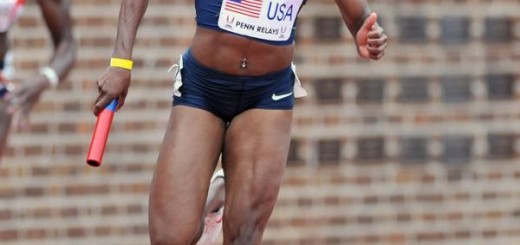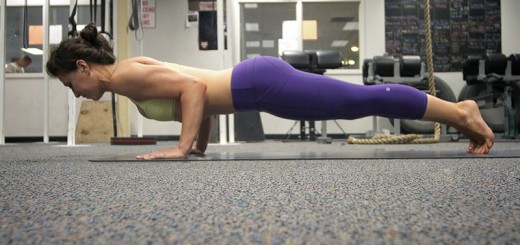“No pain, no gain.” Getting stronger and faster involves discomfort and pain. A natural part of engaging in endurance and strength training regularly is physical pain, often in the form of inflammation of some kind, tissue damage, or even — in a worst-case scenario — fractured or broken bones. As a modern culture, we have afforded ourselves the opportunity to push our bodies to limits beyond what is demanded for basic survival and thus have cultivated the creation and regular use of analgesics (more commonly referred to as painkillers), the most common being NSAIDs.
So… Are NSAIDs safe for me?
Gym rats and weekend warriors alike use them all the time for minor aches and pains, but are they necessary? More importantly, are they safe? In this comprehensive article for T-Nation, industry leading trainer and coach Brad Schoenfeld reviews the current research on painkillers and lays it out for us who are endlessly chasing strength and performance.
There are literally dozens of brands from which to choose: Motrin, Advil, Aleve, Tylenol, Nuprin – the exhaustive list stretches several typewritten pages. And they aren’t hard to come by; most can be readily obtained over-the-counter without a doctor’s prescription, or even a cautionary word from a well-meaning pharmacist.
Although the exact mechanisms aren’t fully understood, DOMS is believed to be the product of damage to muscle tissue.NSAIDs have become an integral part of many serious lifters’ daily training regimens. In the majority of cases they’re used to alleviate the effects of delayed onset muscle soreness (DOMS), which can sometimes last for several days following an intense workout.On the surface, taking NSAIDs to reduce DOMS seems like a no-brainer – just pop some pills and your soreness miraculously disappears. No missed workouts, no detriments in performance. What’s the issue?
Well, let’s look a little deeper. Although the exact mechanisms aren’t fully understood, DOMS is believed to be the product of damage to muscle tissue.
The proposed model goes something like this: Forces associated with muscular contractions, particularly eccentric actions, cause the formation of small micro-tears in both the contractile elements and surface membrane (sarcolemma) of working muscle fibers.
Micro-tears in muscle tissue are not unusual, but does taking NSAIDs make them worse?These micro-tears allow calcium to escape from the muscles, disrupting their intracellular balance and causing further injury to the fibers.Various proteins then interact with the free nerve endings surrounding the damaged fibers, resulting in localized pain and stiffness. Symptoms can be exacerbated by swelling within muscle fibers, which exerts pressure on sensory receptors (nociceptors) and thereby increases the sensation of pain (6).
Is numbing the pain hurting my strength?

Put your nerd glasses and hats on for this next part. The inhibitory effects of NSAIDs definitely mask this sensation of pain as described above, but does this function aid in the larger overall goal of strength and hypertrophy? Let’s take a detailed look at the mechanisms behind DOMS in conjunction with painkillers.
NSAIDs are thought to reduce pain primarily by inhibiting the activity of cyclooxygenase (COX), a family of enzymes that catalyze the conversion of arachidonic acid to proinflammatory prostanoids (5, 22).
The acute post-exercise inflammatory process seems to play a role in muscular adaptations to resistance training.Prostanoids have been shown to be responsible, at least in part, for the soreness associated with DOMS. Studies show they promote inflammation and sensitize nocioceptors, thus heightening sensitivity to pain (16).By blunting the synthesis of prostanoids, NSAIDs can conceivably reduce perceived discomfort post-exercise, allowing you to train hard and heavy day-in-day-out. And that should lead to better gains in size and strength, right?
Maybe not.
Considering that NSAIDs interfere with prostanoid production, it stands to reason that these drugs may also have a negative effect on muscle development.The acute post-exercise inflammatory process seems to play a role in muscular adaptations to resistance training. Prostanoids, in particular, have been shown to play a role in anabolic signaling. Specifically, they’re involved in stimulating pathways responsible for carrying out muscle protein synthesis (13, 18).Considering that NSAIDs interfere with prostanoid production, it stands to reason that these drugs may also have a negative effect on muscle development. Indeed, early research showed this to be the case.
Aww, rats! This is more complex than I thought…

However, most of these studies have been done only on rats (as always). It is common knowledge that functions and pathways within the human body differ greatly between rodents and humans. So what about NSAIDs in humans? The answer may be a bit more perplexing than straightforward given confounding variables.
Hmmm… Studies on both young and elderly subjects using selective and non-selective COX inhibitors alike showed no differences in protein synthesisA research team headed by Dr. Todd Trappe back in 2002 found that non-selective NSAIDs taken after a bout of supramaximal eccentric exercise blunted protein synthesis by 50% to 75%. This seemed to be the final nail in the NSAID coffin; all evidence pointed to the drugs impairing muscle development.But a funny thing happened. Follow-up human trials failed to replicate the initial human findings. Studies on both young and elderly subjects using selective and non-selective COX inhibitors alike showed no differences in protein synthesis (4, 11, 15).
If these findings aren’t confusing enough, consider that several recent studies have investigated the long-term effects of NSAID administration on muscle growth in humans. None of these studies found a negative effect on muscle hypertrophy (8, 14, 20).In fact, one of them showed that NSAIDs actually increased muscle hypertrophy by approximately 50% (20). You heard right, the group popping painkillers doubled their muscular gains!











